
EACH YEAR, AFTER a late spring or early summer full moon, a spectacular synchronised coral spawning occurs on the Great Barrier Reef (hereafter the GBR or the Reef). This nocturnal natural phenomenon is like an aquatic fireworks display, as red, yellow and orange bundles of sperm and eggs are released en masse into the ocean.
Most coral species are hermaphrodites – simultaneously both male and female – and typically release tightly packed bundles of sex cells, which open at the ocean’s surface allowing eggs to meet compatible sperm. During peak spawning, more than 100 species release their sex cells – their gametes – during just a few nights. This phenomenon was first discovered off Townsville in 1984 by a group of young scientists. It was a turning point in their careers and earned them a prestigious Australian Museum Eureka Award for Environmental Research in 1992. They initially documented that 32 coral species had spawned shortly after late spring full moons in 1981 and 1982 at three different locations.
Mass coral spawning is now known to be the most common reproductive mode for the Reef’s corals, and is the culmination of months of development for their sex cells. Timing of the phenomenon is linked to seawater temperature, lunar phases and factors such as the daily cycle of light and dark. In some years, when the full moon falls early in the October–November spawning season, some colonies hold off for a later lunar cycle, resulting in multiple spawning events.
By expelling eggs and sperm at the same time, coral increases opportunities for fertilisation. This mass approach also overwhelms predators: many eggs will be eaten, but at least some will make it through to be fertilised. These develop into mobile larvae that at first move in ocean currents but search out and finally settle on hard substrates in suitable locations to begin growing into new coral colonies.
هذه القصة مأخوذة من طبعة November December 2019 من Australian Geographic Magazine.
ابدأ النسخة التجريبية المجانية من Magzter GOLD لمدة 7 أيام للوصول إلى آلاف القصص المتميزة المنسقة وأكثر من 9,000 مجلة وصحيفة.
بالفعل مشترك ? تسجيل الدخول
هذه القصة مأخوذة من طبعة November December 2019 من Australian Geographic Magazine.
ابدأ النسخة التجريبية المجانية من Magzter GOLD لمدة 7 أيام للوصول إلى آلاف القصص المتميزة المنسقة وأكثر من 9,000 مجلة وصحيفة.
بالفعل مشترك? تسجيل الدخول

SULAWESI SENSATIONS
There are worlds within worlds and marvels untold waiting to be experienced on Indonesia's remote islands.
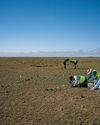
SEARCHING FOR AUSSIE DINOSAURS
Our understanding of where to find ancient life in Australia has been turned on its head by a new appreciation of the country's geology. Now the world is looking to our vast outback as the latest hotspot to locate fossils.
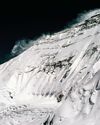
THE HARDEST NIGHT
The first Australian ascent of Mt Everest in 1984 is one of the great feats of mountaineering. Climbed by a small team semi-alpine style, with no bottled oxygen, via the Great (Norton) Couloir, it remains unrepeated 40 years later.
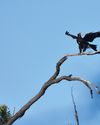
WEDGE-TAILED WONDER
The chance discovery of an eagle nest leads to an extended vigil observing normally hidden behaviours of one of nature's supreme winged marvels.
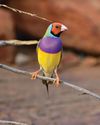
BURDENED BY BEAUTY
Northern Australia's Gouldian finch survives in huge numbers in cages around the world, but its wild population continues to struggle.
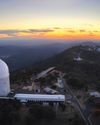
A TELESCOPE FOR A GOLDEN AGE
After a stellar 50 years as one of the country's major scientific assets, the AAT continues to play a major role in keeping Australian astronomy on the world stage.
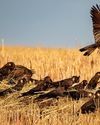
COCKY WHISPERING AT COOMALLO CREEK
This patch of remnant bush on the edge of the West Australian wheatbelt is a place loved by one of Australia's rarest bird species and the man who has studied the site for more than 50 years.

A PIONEERING PAIR
Louisa Atkinson and her mother, Charlotte, were among Australia's earliest authors, and pioneers in women's rights.

THE LONGEST WALK
Lucy Barnard is walking from Argentina to Alaska -the length of the Americas - on an extraordinary journey of endurance and adventure.
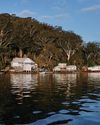
SECLUDED, BUT NOT ALONE
In an era of heightened social isolation, where many of us lead lonely lives, Dangar Island offers the chance to be part of a supportive, connected community.